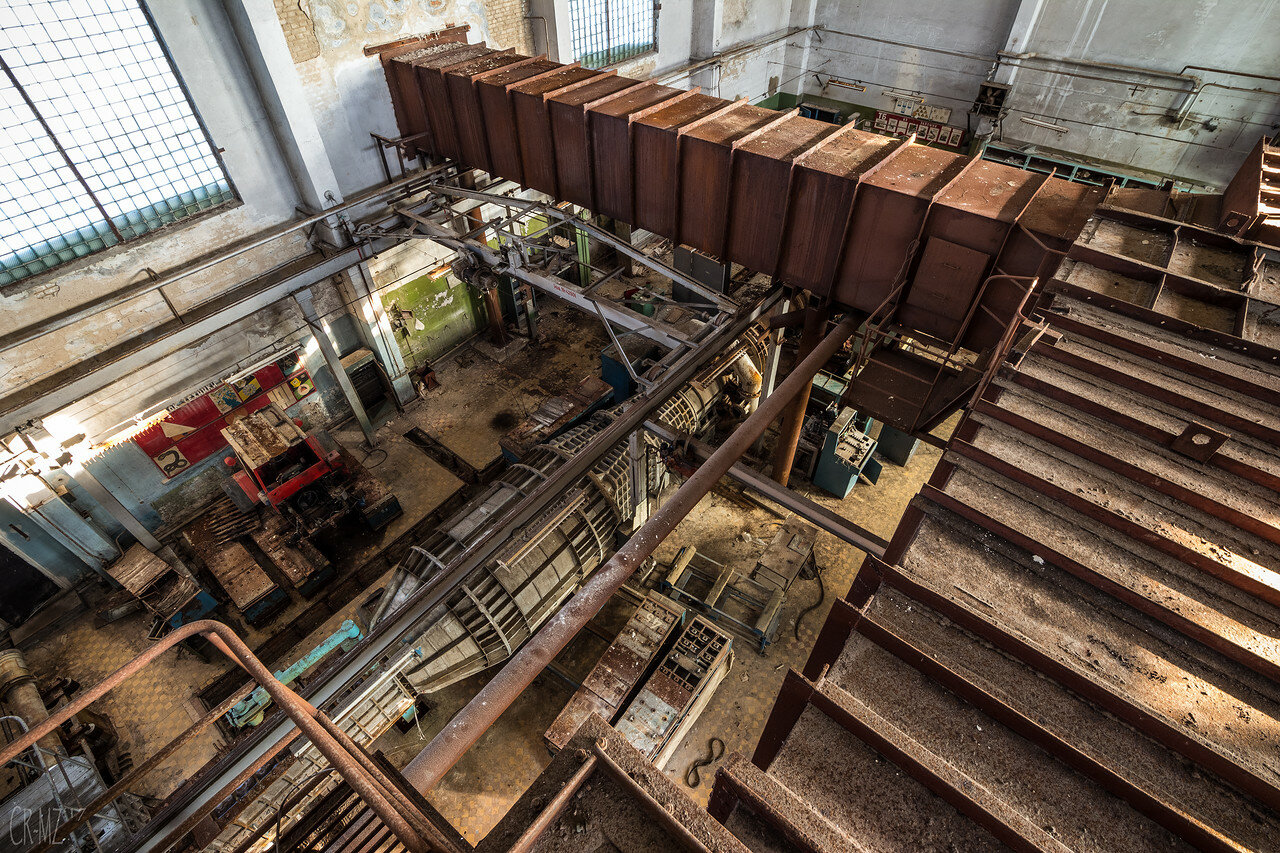With time the research base was expanding, new developments were being introduced and the territory of the scientific complex was enlarging. It was joined by sites where life was boiling. It was boiling twenty years ago.
Walking along the fence, we spotted a suitable place to enter, turned on the teleporter, and found ourselves behind the perimeter. After a bit of a stew on the ground, we decided to make a detour to go unnoticed. Our path led through a technical gas station. Compressed nitrogen, oxygen, propane, and other essential subs. Massive!
From time to time something very powerful exploded on the range next to us, which made you physically feel the sound wave.
At last, we see the main building with the test booth in front of us! We go inside, open the first door in the hall at random, and...
But wait a minute. First, we should look at a slightly less beautiful, but no less important part of the complex: the compressor room. Without it, it would not be possible to achieve the capacities required for the research that was carried out here. In the opposite wing of the building is just everything you need. This engineering marvel pumped air into the facility, accelerating it to incredible speeds.
Let's start with the first floor. The peeling paint and crumbling plaster look awesome.
Coming up to the second floor.
Remote controls. Indicators and dials are included.
And a general view of the second floor from above:
Exiting the compressor room, let's take a look at the administrative part of the building.
On the stairs was a drawn plan of the plant, a fairly accurate reflection of reality. It was a sin not to take a picture:
We’re here.
Let's go on and look at the decayed rooms.
A poster that stands out brightly from its surroundings.
Decayed storage.
After looking at the units that powered the plant and having studied them a bit, we return to the first wing. The test bench was designed to calculate the characteristics of engines and determine the aerodynamics of the hulls of manufactured products.
A unique place of its kind. The test bench was built in 1967-1972 if you believe the nameplates on its parts.
The installation could reach an impressive capacity. It was possible to create conditions close to the real ones: the air flow speeds inside could reach hypersonic ones. The main developments of full-scale tests of products, which served as prototypes of today's hypersonic-guided missiles, were conducted and tested on this complex.
In fact, the tests of hypersonic prototypes were performed and studied 40-50 years ago, but the combat units are being made only now.
The walls of the wind tunnels have stiffening ribs, so that from the ultrahigh-frequency vibrations of the air inside they do not fail.
One of the components is adjacent to the observation chamber. A beautiful welded frame with plenty of the same reinforcing ribs.
And here is the observation chamber itself.
The experiment was monitored by these huge telescopes. The giant that remained on the installation was partly fortunate to have survived, and this one is already bad.
All the results were displayed in the control room, also from where the whole process could be controlled. It is poorly preserved.
In the room itself, there are cabinets, once filled with the logistics of wires.
On one wall, the metal paneling of the booth rusted because of a leaky ceiling.
It’s time to go out.
Until we meet again!










































No comments:
Post a Comment